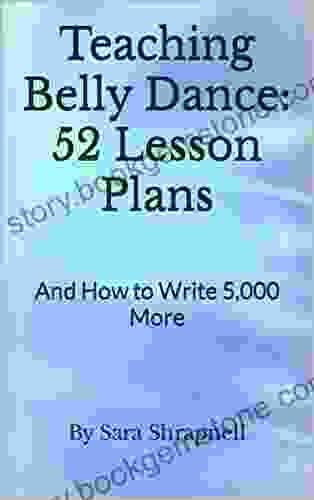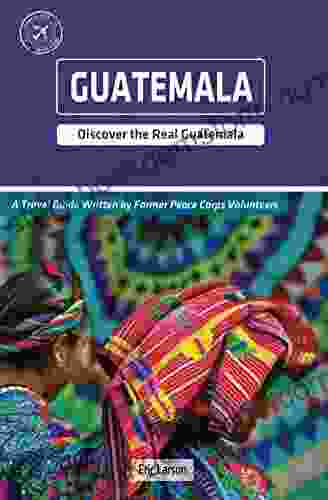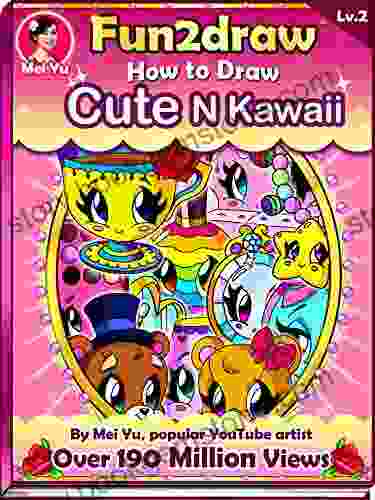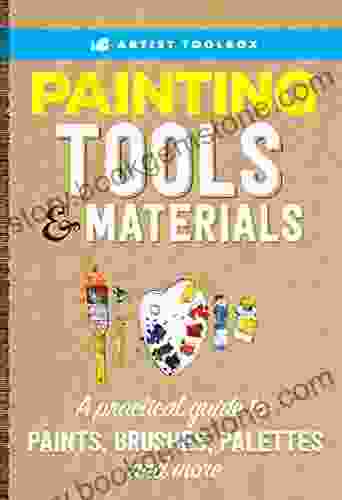How to Write 1,000 Words in a Day: A Comprehensive Guide

Writing 1,000 words in a day may seem like an insurmountable task, but it's entirely possible with the right approach. This comprehensive guide will provide you with a step-by-step roadmap to writing 1,000 words effortlessly, overcoming writer's block, and boosting your writing productivity.
4.7 out of 5
| Language | : | English |
| File size | : | 1017 KB |
| Text-to-Speech | : | Enabled |
| Screen Reader | : | Supported |
| Enhanced typesetting | : | Enabled |
| Word Wise | : | Enabled |
| Print length | : | 170 pages |
| Lending | : | Enabled |
Step 1: Planning and Preparation
Brainstorm and Gather Ideas
The foundation of any successful writing endeavor lies in effective planning and preparation. Begin by brainstorming ideas around your topic. Mind map all the potential angles, concepts, and arguments you can explore. Research your topic thoroughly to gather credible information and supporting evidence.
- Freewriting: Write down everything that comes to mind related to your topic without judgment or editing.
- Clustering: Draw a central circle representing your topic and branch out with related ideas.
- Keyword Research: Use online tools to identify popular search terms and keywords relevant to your topic.
### Create an Outline
Once you have a pool of ideas, organize them into a logical outline. This will serve as the roadmap for your writing process. Break down your topic into sections, headings, and subheadings. Each section should cover a specific aspect of your topic and support your central argument or thesis statement.
- Roman Numerals: Use Roman numerals (I, II, III) to indicate major sections.
- Capital Letters: Use capital letters (A, B, C) for headings within sections.
- Numbers: Use numbers (1, 2, 3) for subheadings within headings.
## Step 2: Overcoming Writer's Block
### Identify the Cause
Writer's block is a common obstacle that can hinder your progress. Understanding the underlying cause is crucial to finding an effective solution. Are you experiencing anxiety, procrastination, perfectionism, or lack of motivation? Pinpoint the root of your writer's block to develop tailored strategies to overcome it.
- Anxiety: Practice relaxation techniques such as deep breathing or meditation.
- Procrastination: Set realistic goals and break down the task into smaller, manageable chunks.
- Perfectionism: Focus on producing a first draft and avoid striving for perfection from the outset.
- Lack of Motivation: Identify your writing goals and remind yourself why you are writing.
### Combatting Techniques
Employ proven techniques to combat writer's block and regain your writing flow.
- Freewriting: Write continuously for a set period without editing or judging.
- Pomodoro Technique: Alternate between focused writing sessions and short breaks.
- Change of Environment: Move to a different location to stimulate your creativity.
- Mind Mapping: Create a visual representation of your ideas to generate new insights.
## Step 3: Generating Content
### Writing the
A captivating is essential to engage your readers and provide context for your writing. Begin with an attention-grabbing hook, such as a surprising statistic, a thought-provoking question, or a personal anecdote. Then, present your thesis statement, which should clearly state the central argument or point of your writing.
- Statistic: "According to a recent study, 80% of Americans experience writer's block at some point in their lives."
- Question: "Have you ever wondered why some people seem to be able to write effortlessly, while others struggle?"
- Anecdote: "I remember vividly the first time I sat down to write a 1,000-word essay. I was so overwhelmed that I couldn't even think straight."
### Developing Body Paragraphs
The body paragraphs should provide evidence, examples, and explanations to support your thesis statement. Each paragraph should focus on a specific subtopic or argument. Use transitional words and phrases to connect your ideas smoothly.
- Topic Sentence: Start each paragraph with a topic sentence that summarizes the main idea of the paragraph.
- Evidence: Provide specific examples, statistics, or research findings to support your claims.
- Explanation: Explain the significance of your evidence and how it relates to your thesis.
- Transitional Words: Use words like "however," "moreover," and "in addition" to connect your paragraphs logically.
### Writing the
The provides a sense of closure and reinforces your thesis statement. Summarize the main points of your writing and restate your argument in a fresh way. Conclude with a call to action, a thought-provoking question, or a final reflection.
- Summary: Recap the key points of your writing briefly.
- Restatement: Rephrase your thesis statement in a new light.
- Call to Action: Encourage your readers to take a specific action, such as signing up for a newsletter or sharing your article.
- Question: Pose a thought-provoking question to leave your readers pondering.
- Reflection: Offer a personal reflection on the topic or share your insights.
## Step 4: Refining and Editing
### Self-Editing
Once you have completed your first draft, take a break and come back to it with fresh eyes. Self-edit your writing carefully, checking for errors in grammar, punctuation, and spelling. Ensure that your ideas flow logically and that your writing is clear and concise.
- Read Aloud: Reading your writing aloud can help you identify awkward phrasing or grammatical errors.
- Use Grammarly: Grammar and spelling checkers like Grammarly can assist in catching errors.
- Eliminate Redundancies: Remove any unnecessary words or phrases that don't add value to your writing.
- Simplify Sentences: Break down complex sentences into simpler ones for better readability.
### Peer Feedback
Seek feedback from a trusted colleague, friend, or family member who is familiar with your topic. Ask for their honest opinion about your writing, including its strengths, weaknesses, and any areas that need improvement.
- Clarity: Ask for feedback on whether your writing is easy to understand and follow.
- Structure: Get an opinion on the flow and organization of your ideas.
- Engagement: Seek feedback on whether your writing is engaging and holds the reader's attention.
- Tone: Ensure that the tone of your writing is appropriate for your audience and purpose.
##
Writing 1,000 words in a day is an achievable goal with the right approach. By following the steps outlined in this comprehensive guide, you can overcome writer's block, generate compelling content, and refine your writing for success. Remember, writing is a skill that improves with practice. Keep writing, keep learning, and you will discover that writing 1,000 words in a day becomes
4.7 out of 5
| Language | : | English |
| File size | : | 1017 KB |
| Text-to-Speech | : | Enabled |
| Screen Reader | : | Supported |
| Enhanced typesetting | : | Enabled |
| Word Wise | : | Enabled |
| Print length | : | 170 pages |
| Lending | : | Enabled |
Do you want to contribute by writing guest posts on this blog?
Please contact us and send us a resume of previous articles that you have written.
 Best Book
Best Book Page Flip
Page Flip Bookshelf
Bookshelf Literary loom
Literary loom Chapter
Chapter Bookish
Bookish PageTurner
PageTurner Bibliophile
Bibliophile Story
Story Inkwell
Inkwell Bookworm
Bookworm Labyrinth
Labyrinth Plot Twist
Plot Twist Prose
Prose Paperback
Paperback Storyteller
Storyteller Sanctuary
Sanctuary Fiction
Fiction Reading
Reading Chronicle
Chronicle Read
Read Sharlene Rendle
Sharlene Rendle Tom Nichols
Tom Nichols Steven M Barrett
Steven M Barrett Jeremy Asher Dauber
Jeremy Asher Dauber L Ron Hubbard
L Ron Hubbard Peter Max
Peter Max Douglas Phillips
Douglas Phillips Jason Anspach
Jason Anspach Valerie Van Ballaer
Valerie Van Ballaer Lynn F Forney
Lynn F Forney James Caskey
James Caskey Tracey Eaton
Tracey Eaton Maya Angelou
Maya Angelou Chanrithy Him
Chanrithy Him Jeanie Tsui
Jeanie Tsui Lorraine Hansberry
Lorraine Hansberry Jess Grippo
Jess Grippo Brian Lawrenson
Brian Lawrenson Tom Sancton
Tom Sancton Bruce Sterling
Bruce Sterling Anna Todd
Anna Todd Operation Alpha
Operation Alpha Lee Hadan
Lee Hadan Eric Franklin
Eric Franklin Brittney Brooke
Brittney Brooke Frances Dinkelspiel
Frances Dinkelspiel Gulbahar Haitiwaji
Gulbahar Haitiwaji Jim Krause
Jim Krause Oliver Sin
Oliver Sin Jordan Matter
Jordan Matter Kara Tatelbaum
Kara Tatelbaum Eyal Davidson
Eyal Davidson Maureen Furniss
Maureen Furniss Cheryl Probst
Cheryl Probst G Bruce Boyer
G Bruce Boyer Zohara Hirji
Zohara Hirji Jonathan Kellerman
Jonathan Kellerman John Williams
John Williams Justin Merm
Justin Merm Nicole Seymour
Nicole Seymour Frederick Harris
Frederick Harris Peter Ford
Peter Ford Francisco Martin Rayo
Francisco Martin Rayo Michaelbrent Collings
Michaelbrent Collings Karen Telling
Karen Telling Zaina Brown
Zaina Brown Sally Mott Freeman
Sally Mott Freeman Laurie Mcandish King
Laurie Mcandish King Matthew Farrer
Matthew Farrer Miles Orvell
Miles Orvell Sandra Cross
Sandra Cross Petra Kuppers
Petra Kuppers John Floyd
John Floyd Wallace Terry
Wallace Terry Pui Che
Pui Che Franny Moyle
Franny Moyle Matthew Morgante
Matthew Morgante Weike Wang
Weike Wang Matthew Baxter
Matthew Baxter Jay Scarfone
Jay Scarfone Evelio Grillo
Evelio Grillo Linda Birch
Linda Birch Ted Loukes
Ted Loukes Emma Gift
Emma Gift Leana Wen
Leana Wen John Rechy
John Rechy Ian Usher
Ian Usher Michael Eric Dyson
Michael Eric Dyson Mark Dawson
Mark Dawson Bill Fawcett
Bill Fawcett Esmeralda Santiago
Esmeralda Santiago Ben Macintyre
Ben Macintyre Fiona Davis
Fiona Davis Jerry Yarnell
Jerry Yarnell Jerry Stahl
Jerry Stahl Kevin Collamore Braun
Kevin Collamore Braun John Cameron Smith
John Cameron Smith Erika B
Erika B Georgia Hunter
Georgia Hunter Piers Anthony
Piers Anthony Johann Wolfgang Von Goethe
Johann Wolfgang Von Goethe Esther Jungreis
Esther Jungreis Flora Miller Biddle
Flora Miller Biddle Karen Haller
Karen Haller Brenda Jackson
Brenda Jackson Nice Leng Ete
Nice Leng Ete Gene Roddenberry
Gene Roddenberry Elaine Lui
Elaine Lui Max Anderson
Max Anderson Philip Caputo
Philip Caputo H G Wells
H G Wells Howard Thurman
Howard Thurman Eva Ibbotson
Eva Ibbotson Jerry Remy
Jerry Remy Francesco Careri
Francesco Careri Johnson Cheu
Johnson Cheu Maria Augusta Trapp
Maria Augusta Trapp Leticia Sansores
Leticia Sansores Chanda Prescod Weinstein
Chanda Prescod Weinstein Johnnie Gentle
Johnnie Gentle Frank Herbert
Frank Herbert Dennis Vanderkerken
Dennis Vanderkerken John Graves
John Graves William F Stark
William F Stark Mayte Garcia
Mayte Garcia Ernestine Hayes
Ernestine Hayes Mary Vaughan
Mary Vaughan Samantha Ford
Samantha Ford Neal Gabler
Neal Gabler Terry Goodkind
Terry Goodkind Eoin O Callaghan
Eoin O Callaghan Georgina Shorter
Georgina Shorter Patricia Briggs
Patricia Briggs Gerald Hausman
Gerald Hausman Frances Stanfield
Frances Stanfield Fred M Grandinetti
Fred M Grandinetti Hugh Pendexter
Hugh Pendexter Michael F Kastre
Michael F Kastre Sheryl Sandberg
Sheryl Sandberg Eric Walters
Eric Walters Orin Starn
Orin Starn Gris Grimly
Gris Grimly Stephanie Mehta
Stephanie Mehta Fergal Keane
Fergal Keane John Baxter
John Baxter Lee Feigon
Lee Feigon Carolyn Brown
Carolyn Brown Sheila Hocken
Sheila Hocken Rudolf Steiner
Rudolf Steiner Frederick Douglass
Frederick Douglass Tiece
Tiece Yelena Lembersky
Yelena Lembersky Traci Foust
Traci Foust Lewis Grassic Gibbon
Lewis Grassic Gibbon Lauren Collins
Lauren Collins Russell Means
Russell Means Mahealani Uchiyama
Mahealani Uchiyama Ernesto Galarza
Ernesto Galarza Jamie Mcfarlane
Jamie Mcfarlane Tim Leong
Tim Leong Christopher Reutinger
Christopher Reutinger Nathaniel Schiffman
Nathaniel Schiffman Richard Rodriguez
Richard Rodriguez Wilson Harvey
Wilson Harvey Robert Hardman
Robert Hardman Jeanne Howard
Jeanne Howard Funa
Funa Jenni Dobson
Jenni Dobson Evan Winter
Evan Winter Simran Bansal
Simran Bansal Ian Mcewan
Ian Mcewan Sibylla Nash
Sibylla Nash Nathan Hystad
Nathan Hystad Olga Baranova
Olga Baranova Eungjun Min
Eungjun Min Kallie Young
Kallie Young Drew Karpyshyn
Drew Karpyshyn M R Green
M R Green Guy Austin
Guy Austin Peter Schjeldahl
Peter Schjeldahl Digital Papyrus
Digital Papyrus Taylor Branch
Taylor Branch Jerry Boyd
Jerry Boyd Jacques Maritain
Jacques Maritain Frank Babb
Frank Babb Piri Thomas
Piri Thomas Kit Sun Cheah
Kit Sun Cheah Linda Kemp
Linda Kemp Logan Jacobs
Logan Jacobs Judith Yates
Judith Yates Frederick Forsyth
Frederick Forsyth Kevina Hopkins
Kevina Hopkins Jessica Gadziala
Jessica Gadziala Jennifer 8 Lee
Jennifer 8 Lee Enrico Massetti
Enrico Massetti Jacob Broschart
Jacob Broschart Os Cresson
Os Cresson Mike Bockoven
Mike Bockoven Susan Mahalick
Susan Mahalick Shari Blaukopf
Shari Blaukopf Endiya Carter
Endiya Carter Funmi Fetto
Funmi Fetto Paul D Marks
Paul D Marks Brandon Q Morris
Brandon Q Morris Raiford Guins
Raiford Guins Fernand Braudel
Fernand Braudel Florence Scovel Shinn
Florence Scovel Shinn Sandro Jung
Sandro Jung Ian Warrell
Ian Warrell Putsata Reang
Putsata Reang Belle Calhoune
Belle Calhoune Tipu Khan
Tipu Khan J M Calverley
J M Calverley Nicholas Mirzoeff
Nicholas Mirzoeff Groucho Marx
Groucho Marx Farrah Rochon
Farrah Rochon Frederik Pohl
Frederik Pohl Filippo Ulivieri
Filippo Ulivieri Marc Uwe Kling
Marc Uwe Kling Robert Bailey
Robert Bailey Kellee L Greene
Kellee L Greene Kate Spade New York
Kate Spade New York Frances Stonor Saunders
Frances Stonor Saunders Eric Rouleau
Eric Rouleau Gillian Marchenko
Gillian Marchenko Martin Ony
Martin Ony Richard Phillips
Richard Phillips Richard Killeen
Richard Killeen Sara King
Sara King Hayward Cirker
Hayward Cirker Patricia Raybon
Patricia Raybon John Cage
John Cage Kelly Wiese
Kelly Wiese Leigh Forbes
Leigh Forbes Stefan C Reif
Stefan C Reif Mitchell Grey
Mitchell Grey Belinda Austin
Belinda Austin Eugene Robinson
Eugene Robinson John Alexander
John Alexander Eve Vaughn
Eve Vaughn Emma Sky
Emma Sky Keith Svagerko
Keith Svagerko Ryan O Connell
Ryan O Connell Jo Charnock
Jo Charnock Meniere Man
Meniere Man S A Chakraborty
S A Chakraborty Jo Spain
Jo Spain Sophie Stern
Sophie Stern Chelsea Handler
Chelsea Handler Jeffrey Archer
Jeffrey Archer Frank Argote Freyre
Frank Argote Freyre Jerry Minchey
Jerry Minchey Meiqin Wang
Meiqin Wang William J Conaway
William J Conaway Quan Millz
Quan Millz Robert C Wood
Robert C Wood Zane
Zane Mark Horrell
Mark Horrell Regina Louise
Regina Louise Steven Brust
Steven Brust Michael C Sturman
Michael C Sturman S Qiouyi Lu
S Qiouyi Lu Frederik L Schodt
Frederik L Schodt Eric Wiberg
Eric Wiberg J Chary
J Chary Rob Smyth
Rob Smyth Margaret Aycock
Margaret Aycock John Hundley
John Hundley Steven Derosa
Steven Derosa Wendy Bellion
Wendy Bellion Shiva Rahbaran
Shiva Rahbaran Lisa Napoli
Lisa Napoli Mike Jack Stoumbos
Mike Jack Stoumbos Esraa Ghazo
Esraa Ghazo Michelle Holder
Michelle Holder Marcus Sloss
Marcus Sloss Kent Blansett
Kent Blansett Wes D Gehring
Wes D Gehring Lily King
Lily King James David Victor
James David Victor Dirk Walvoord
Dirk Walvoord Neil Clarke
Neil Clarke Regan Cerato
Regan Cerato Kristin Van Leuven
Kristin Van Leuven Lisa Eldridge
Lisa Eldridge Vanessa R Sasson
Vanessa R Sasson James Woodford
James Woodford Ta Nehisi Coates
Ta Nehisi Coates Paula Reed
Paula Reed Ronnie Lipton
Ronnie Lipton Diane Greenberg
Diane Greenberg Farah Jasmine Griffin
Farah Jasmine Griffin Luther Standing Bear
Luther Standing Bear Lina Bengtsdotter
Lina Bengtsdotter Stacey Abrams
Stacey Abrams Francisco Goya
Francisco Goya Laureen Jordan
Laureen Jordan Sharon Swift
Sharon Swift Jayne Wark
Jayne Wark Jaleen Grove
Jaleen Grove Erin French
Erin French Ros Per
Ros Per David Codamo
David Codamo Joe Hammond
Joe Hammond Jennifer Visocky O Grady
Jennifer Visocky O Grady Ramin Zahed
Ramin Zahed Eric Larson
Eric Larson Geoffrey Ball
Geoffrey Ball Susan Mallery
Susan Mallery Ellen Lupton
Ellen Lupton Ann Petry
Ann Petry Kunal Verma
Kunal Verma Frances Kiernan
Frances Kiernan Kelly Hodge
Kelly Hodge Oliver Kent
Oliver Kent Jo Tatchell
Jo Tatchell Mark Hillary
Mark Hillary Florian Illies
Florian Illies John Foster
John Foster Jayne Rylon
Jayne Rylon Jimmy Santiago Baca
Jimmy Santiago Baca Debra Gwartney
Debra Gwartney Jacob Burckhardt
Jacob Burckhardt Rachel Eskandari
Rachel Eskandari Frank Wall
Frank Wall Richard Sale
Richard Sale Wesley Granberg Michaelson
Wesley Granberg Michaelson Richard Fife
Richard Fife P Planat
P Planat Mina Carter
Mina Carter Michael Siebenbrodt
Michael Siebenbrodt S M Anderson
S M Anderson Birgit O Connor
Birgit O Connor Tom Piazza
Tom Piazza Revised Edition Kindle Edition
Revised Edition Kindle Edition Maria Tallchief
Maria Tallchief Trevor Waugh
Trevor Waugh Michael N Marcus
Michael N Marcus T F Rhoden
T F Rhoden Jerome Preisler
Jerome Preisler Torey L Hayden
Torey L Hayden Josie Lewis
Josie Lewis Karl Iglesias
Karl Iglesias Rita Naomi Moran
Rita Naomi Moran Hugh Howey
Hugh Howey Manny Khoshbin
Manny Khoshbin Hashim Akib
Hashim Akib Keisha Quallo
Keisha Quallo Patty Krawec
Patty Krawec Glenn Dakin
Glenn Dakin Jennifer Higgie
Jennifer Higgie Sunny Hostin
Sunny Hostin Fiona Peart
Fiona Peart Volker Poelzl
Volker Poelzl Sandy Steen Bartholomew
Sandy Steen Bartholomew Karl Fulves
Karl Fulves Julian Aguon
Julian Aguon Dawn C Crouch
Dawn C Crouch Henri J M Nouwen
Henri J M Nouwen Jan Moran
Jan Moran Sapphire
Sapphire Rachael Chastain
Rachael Chastain Leslie Frontz
Leslie Frontz Uri Dan
Uri Dan Lola Dodge
Lola Dodge Sandra Rendgen
Sandra Rendgen Harriet Mcbryde Johnson
Harriet Mcbryde Johnson Stephen Laskevitch
Stephen Laskevitch Joe Kane
Joe Kane Vera Raye
Vera Raye Michael Mcgarrity
Michael Mcgarrity Weina Dai Randel
Weina Dai Randel Lindsey Tramuta
Lindsey Tramuta Enrique Herrera
Enrique Herrera Alejandro Dujovne
Alejandro Dujovne Ferrett Steinmetz
Ferrett Steinmetz Luke Waterson
Luke Waterson Holly Winter Huppert
Holly Winter Huppert Jasmine Taylor
Jasmine Taylor Franz Sales Meyer
Franz Sales Meyer Tim Pratt
Tim Pratt Kid Congo Powers
Kid Congo Powers Jay Parini
Jay Parini G K Chesterton
G K Chesterton Paul Allain
Paul Allain Franco Mormando
Franco Mormando Matthew W Sanford
Matthew W Sanford John W Morehead
John W Morehead Vaclav Havel
Vaclav Havel Jimmy Snuka
Jimmy Snuka Lawrence Chui
Lawrence Chui Shoba Narayan
Shoba Narayan Jane Dempster Smith
Jane Dempster Smith Will Gompertz
Will Gompertz Walter Foster Creative Team
Walter Foster Creative Team Vicki Andree
Vicki Andree Seanan Mcguire
Seanan Mcguire Lynsay Sands
Lynsay Sands John Marshall
John Marshall Erin H Turner
Erin H Turner Richard Walter
Richard Walter Glennon Doyle
Glennon Doyle Robert Westbrook
Robert Westbrook Eric Thomson
Eric Thomson Steven Heller
Steven Heller Stephen M Silverman
Stephen M Silverman Ilene Beckerman
Ilene Beckerman Jeff Burgess
Jeff Burgess Boze Hadleigh
Boze Hadleigh Simon Winchester
Simon Winchester Julie Garwood
Julie Garwood Eric Foner
Eric Foner Lee Hammond
Lee Hammond Peter Barnes
Peter Barnes Francene Hart
Francene Hart J Donald Walters
J Donald Walters Henry Kuttner
Henry Kuttner Fredric Brown
Fredric Brown Harry Thurston
Harry Thurston Timm Mains
Timm Mains Tom Hoffmann
Tom Hoffmann E J Fleming
E J Fleming Martyn Clifford
Martyn Clifford Katherine Baber
Katherine Baber Enrique Zaldivar
Enrique Zaldivar Ted Andrews
Ted Andrews Faith Evans Sills
Faith Evans Sills Randy Welborn
Randy Welborn Saidiya V Hartman
Saidiya V Hartman Niobia Bryant
Niobia Bryant Oscar Lovell Triggs
Oscar Lovell Triggs Keah Brown
Keah Brown Leslie J Sherrod
Leslie J Sherrod Stephen Jones
Stephen Jones Tim O Brien
Tim O Brien Ocean Vuong
Ocean Vuong Lora S Irish
Lora S Irish Sandy Allnock
Sandy Allnock Mark Simon
Mark Simon Richard Dunlop
Richard Dunlop F B Heald
F B Heald G S Jennsen
G S Jennsen Matthew Palmer
Matthew Palmer David B Levy
David B Levy Mark Harris
Mark Harris Mitch Albom
Mitch Albom Tom Blakemore
Tom Blakemore S Yvonne
S Yvonne Erin Meads
Erin Meads Eric Shanes
Eric Shanes Jeff Pearlman
Jeff Pearlman Edward Brody
Edward Brody Sir Richard Francis Burton
Sir Richard Francis Burton Jennifer Cruz
Jennifer Cruz Marion Amberg
Marion Amberg Susan Sontag
Susan Sontag Eric Metaxas
Eric Metaxas Chris Enss
Chris Enss Philip Donlay
Philip Donlay J L Torres
J L Torres Q David Bowers
Q David Bowers Gary W Bowersox
Gary W Bowersox F Scott Fitzgerald
F Scott Fitzgerald Stephanie Pui Mun Law
Stephanie Pui Mun Law Susan Nathan
Susan Nathan Stephanie Bower
Stephanie Bower Ross Feld
Ross Feld Nicole R Fleetwood
Nicole R Fleetwood Rebekah Taussig
Rebekah Taussig Jessie Redmon Fauset
Jessie Redmon Fauset Eric Jerome Dickey
Eric Jerome Dickey Mark Rice
Mark Rice Frank Mclynn
Frank Mclynn Nahal Tajadod
Nahal Tajadod Nicholas Crouch
Nicholas Crouch Glynn Stewart
Glynn Stewart Gabe Fajuri
Gabe Fajuri Loren Moss
Loren Moss Jennet Conant
Jennet Conant Ernie Jr Johnson
Ernie Jr Johnson Ken Hultgren
Ken Hultgren Teruko Sakurai
Teruko Sakurai Maury Aaseng
Maury Aaseng Jade Spark
Jade Spark Scott Shupe
Scott Shupe Quang Van Nguyen
Quang Van Nguyen Jeff Yang
Jeff Yang Ernst Pawel
Ernst Pawel Lynnea Lee
Lynnea Lee Rainer Maria Rilke
Rainer Maria Rilke Fred S Kleiner
Fred S Kleiner Gladys Malvern
Gladys Malvern Barbara Lewis
Barbara Lewis Klaus Carl
Klaus Carl Melissa Hart
Melissa Hart Curt Warner
Curt Warner Frank Gado
Frank Gado Peter Heller
Peter Heller Yvon Chatelin
Yvon Chatelin Ray Balkwill
Ray Balkwill George Allen Durkee
George Allen Durkee David Anicetti
David Anicetti Misty M Beller
Misty M Beller Kathleen E Woodiwiss
Kathleen E Woodiwiss Scott Rigsby
Scott Rigsby Scott Waddle
Scott Waddle Katrien Van Der Schueren
Katrien Van Der Schueren Sofie Roach
Sofie Roach Martin Gitlin
Martin Gitlin Jami Attenberg
Jami Attenberg Marie Benedict
Marie Benedict Frank Vlastnik
Frank Vlastnik Mei Yu
Mei Yu Zenna Henderson
Zenna Henderson Yahrah St John
Yahrah St John Henry Adams
Henry Adams Lisa Gardner
Lisa Gardner Gavin Strange
Gavin Strange Jody Eddy
Jody Eddy Stephen Bucaro
Stephen Bucaro Seyyed Hossein Nasr
Seyyed Hossein Nasr Harry Ritter
Harry Ritter Sir John Chardin
Sir John Chardin Mary Mccarthy
Mary Mccarthy Sandy Alvarez
Sandy Alvarez Evelyn Gallardo
Evelyn Gallardo Leilehua Yuen
Leilehua Yuen Ursula Bacon
Ursula Bacon Joshua Safran
Joshua Safran Selwyn Leamy
Selwyn Leamy Isaac Asimov
Isaac Asimov Thota Ramesh
Thota Ramesh John Walker
John Walker Melanie Cambridge
Melanie Cambridge Nick Kyme
Nick Kyme Jericho Brown
Jericho Brown Mark Padilla
Mark Padilla Reginald F Lewis
Reginald F Lewis Tish Jett
Tish Jett Victoria Finlay
Victoria Finlay R A Nargi
R A Nargi John Mcphee
John Mcphee John Scalzi
John Scalzi Georgina Pazcoguin
Georgina Pazcoguin Henry W Simon
Henry W Simon Jessica Mack
Jessica Mack Franklin Horton
Franklin Horton Sallust
Sallust Mari Lyn Henry
Mari Lyn Henry Christian Kallias
Christian Kallias Michael Moran
Michael Moran R Coxton
R Coxton Julia Emma
Julia Emma Mark Tufo
Mark Tufo Valerie Steele
Valerie Steele Eriko Ogihara Schuck
Eriko Ogihara Schuck Leisa Rundquist
Leisa Rundquist Frank Settle
Frank Settle Michael J Decker
Michael J Decker Roma Ligocka
Roma Ligocka T R Napper
T R Napper Susan Britt Gallagher
Susan Britt Gallagher Tu Ilape Vimahi
Tu Ilape Vimahi James Craig
James Craig Mike Kraus
Mike Kraus Will Lutwick
Will Lutwick Ignatia Broker
Ignatia Broker Jo B Paoletti
Jo B Paoletti Ree Drummond
Ree Drummond Erin Robinson Hoffman
Erin Robinson Hoffman Explore Towin
Explore Towin John Tateishi
John Tateishi Mary Monroe
Mary Monroe Suze Solari
Suze Solari Farah Bidin
Farah Bidin Karen Brooks Hopkins
Karen Brooks Hopkins L X Beckett
L X Beckett Mia Black
Mia Black Eshaan Sombhatta
Eshaan Sombhatta Firoozeh Dumas
Firoozeh Dumas F Knight
F Knight Rachel Trethewey
Rachel Trethewey Sy Montgomery
Sy Montgomery Renee D Aoust
Renee D Aoust S K Dunstall
S K Dunstall Eva Priest
Eva Priest Clark Norton
Clark Norton Jennifer Smith Turner
Jennifer Smith Turner Sydney Ladensohn Stern
Sydney Ladensohn Stern J L Witterick
J L Witterick Kennedy Odede
Kennedy Odede Lucy Vine
Lucy Vine Rose Marie Beebe
Rose Marie Beebe Sharon C Cooper
Sharon C Cooper Eric Karjaluoto
Eric Karjaluoto Laura Sherman
Laura Sherman Graeme I
Graeme I Paul Bowles
Paul Bowles Jasmine Mans
Jasmine Mans Laura Reiter
Laura Reiter Veronica Winters
Veronica Winters Thad Komorowski
Thad Komorowski Frederick Starr
Frederick Starr Shirley Blancke
Shirley Blancke Joseph D Addetta
Joseph D Addetta Eva Mozes Kor
Eva Mozes Kor Nancy Sharon Collins
Nancy Sharon Collins Justin Sloan
Justin Sloan Idtravelling
Idtravelling Maureen Callahan
Maureen Callahan Mark Crilley
Mark Crilley Deborah Solomon
Deborah Solomon Jewelle Gomez
Jewelle Gomez Lynda Lopez
Lynda Lopez Francine Prose
Francine Prose Matt Forster
Matt Forster Joseph Delaney
Joseph Delaney Ruby Boukabou
Ruby Boukabou G Costa
G Costa Kenyatta Kelechi
Kenyatta Kelechi John P Murphy
John P Murphy Fania E Davis
Fania E Davis Stanley Meisler
Stanley Meisler Mark Wayne Mcginnis
Mark Wayne Mcginnis Carol Jenkins
Carol Jenkins Ruth E Iskin
Ruth E Iskin Fodor S Travel Guides
Fodor S Travel Guides
Light bulbAdvertise smarter! Our strategic ad space ensures maximum exposure. Reserve your spot today!
 Miguel de CervantesFollow ·15.6k
Miguel de CervantesFollow ·15.6k Osamu DazaiFollow ·9.9k
Osamu DazaiFollow ·9.9k Michael CrichtonFollow ·8.7k
Michael CrichtonFollow ·8.7k John ParkerFollow ·4.6k
John ParkerFollow ·4.6k Shannon SimmonsFollow ·11.3k
Shannon SimmonsFollow ·11.3k Evan HayesFollow ·4.6k
Evan HayesFollow ·4.6k Ivan TurgenevFollow ·17.4k
Ivan TurgenevFollow ·17.4k Douglas AdamsFollow ·15k
Douglas AdamsFollow ·15k
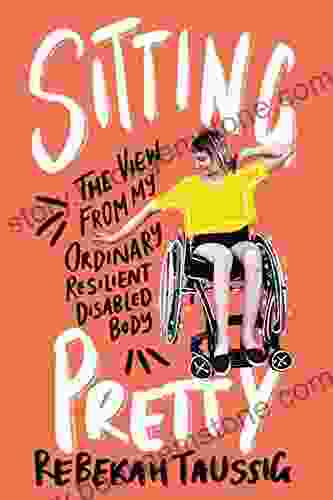
 Anton Foster
Anton FosterThe View From My Ordinary Resilient Disabled Body
In a world where...

 Chandler Ward
Chandler WardThe Rise of the Jain Two: A Monument to Naval Supremacy
In the vast...

 Jonathan Hayes
Jonathan HayesThe Right Thing by Scott Waddle: A Path Through the...
Scott Waddle's "The...
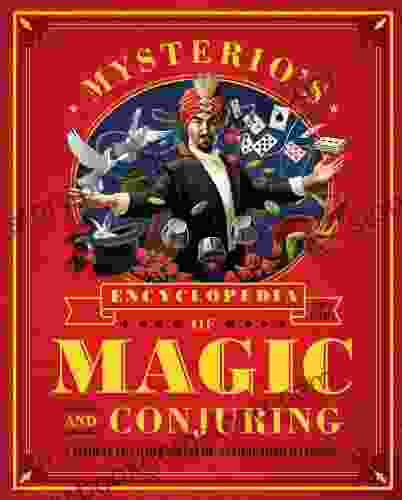
 Hamilton Bell
Hamilton BellMysterio Encyclopedia of Magic and Conjuring: A...
Mysterio Encyclopedia of...

 Zachary Cox
Zachary CoxAge of Expansion: Kurtherian Gambit, Valerie Elites - A...
: A Realm of Endless...

 Lawrence Bell
Lawrence BellA Short History of Falling: From Newton to Freefall
Falling is a...
4.7 out of 5
| Language | : | English |
| File size | : | 1017 KB |
| Text-to-Speech | : | Enabled |
| Screen Reader | : | Supported |
| Enhanced typesetting | : | Enabled |
| Word Wise | : | Enabled |
| Print length | : | 170 pages |
| Lending | : | Enabled |


